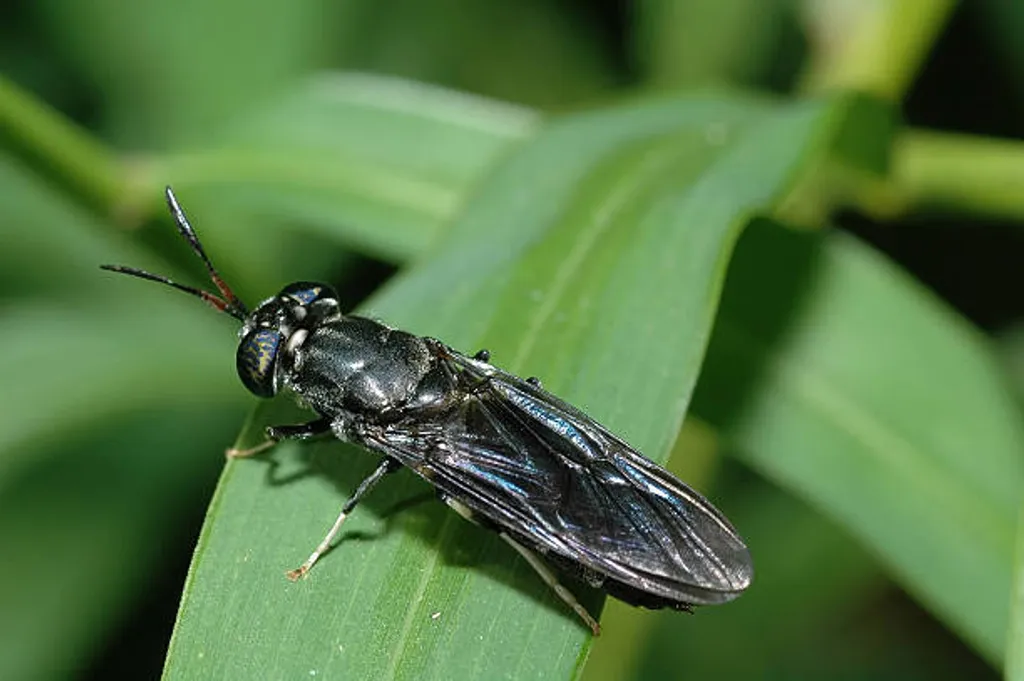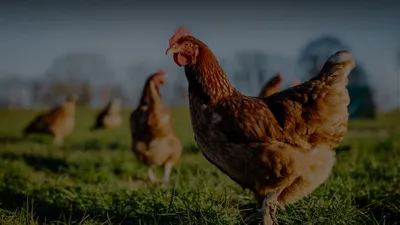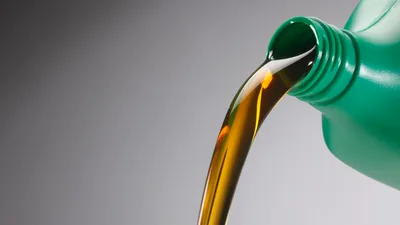Historical origins and early documentation
The black soldier fly (Hermetia illucens) has origins in the Neotropical ecozone, covering parts of South and Central America. While the exact timeline of its evolutionary emergence is unclear, fossil evidence suggests that this species has existed in its native range for millions of years, evolving alongside the rich ecosystems of the Americas.
The first scientific documentation of the black soldier fly was by Carl Linnaeus, the father of modern taxonomy. In the 10th edition of “Systema Naturae” (1758), Linnaeus described the species as Musca illucens. However, this classification was later revised. In 1805, French zoologist Pierre André Latreille re-evaluated the species’ taxonomic position, recognizing distinct morphological traits that set it apart from the Musca genus. Latreille reclassified it under the genus Hermetia, giving it the name Hermetia illucens that it holds today.
Latreille’s reclassification marked a significant step in understanding the black soldier fly’s unique characteristics and its divergence from other fly species, setting the stage for future scientific studies on its biology, ecology, and potential applications.
Natural spread and distribution
Initially, Hermetia illucens was found across the Americas, from Argentina’s temperate regions to the southern United States. This broad range highlighted the species’ adaptability, which later facilitated its global spread.
Several factors contributed to its spread within its native range:
-
Climate adaptation: The black soldier fly favored warm, humid environments typical of tropical and subtropical regions. However, its ability to endure a range of temperatures allowed it to expand its habitat during warmer seasons.
-
Larval diet flexibility: The larvae could consume and process a wide variety of organic matter, from fruit and vegetable waste to manure, allowing the species to thrive in diverse ecosystems, including near human settlements.
-
Natural dispersal mechanisms: Wind currents played a crucial role in the species’ dispersal. While adult flies are not known for long-distance flights, strong winds could carry them to new areas. Additionally, hurricanes and tropical storms might have contributed to longer-distance dispersal events.
-
Waterway dispersal: Rivers and streams likely served as natural conduits for the species’ spread. Organic matter containing eggs or larvae could be transported downstream, leading to new habitat colonization.
-
Avian assistance: Although not definitively proven, it is hypothesized that migratory birds might have helped disperse black soldier fly eggs or larvae through undigested insect matter in their droppings.
The species’ expansion within the Americas was uneven, influenced by local climate conditions, habitat availability, and the presence of organic matter for larval development. This natural spread set the stage for its ability to colonize new territories, a characteristic vital for its subsequent global expansion.
Accidental and intentional introductions
The black soldier fly’s global spread accelerated with human-assisted dispersal, transforming it from a regional species to a global presence. This spread can be categorized into accidental introductions and intentional translocations.
Accidental introductions
The rapid globalization of trade and travel in the 20th century provided numerous opportunities for the unintended transport of black soldier flies:
-
Agricultural trade: The international trade of fruits and vegetables became an inadvertent vector. Eggs or young larvae, often inconspicuous, could hitch rides in produce shipments from the Americas.
-
Soil and compost transport: The movement of soil, compost, and other organic materials for horticultural purposes offered another pathway. Eggs laid in these substrates could easily go unnoticed during international shipments.
-
Military operations: The increased global movement of military personnel and equipment, especially during and after World War II, may have contributed to the fly’s spread. Organic waste associated with military camps could harbor the insects, facilitating their introduction to new regions.
-
Aviation: The growth of international air travel not only increased the speed at which the flies could be transported but also opened up new, previously isolated regions to potential colonization.
Intentional introductions
As awareness of the black soldier fly’s potential benefits grew, deliberate introductions became more common, particularly in the latter half of the 20th century and early 21st century:
-
Waste management: Recognizing the species’ efficiency in breaking down organic waste, several countries initiated programs to introduce black soldier flies as a biological waste management solution, notably in parts of Asia and Africa.
-
Agricultural applications: The high protein content of black soldier fly larvae attracted the agricultural sector. Intentional introductions were made to establish breeding colonies for animal feed production, especially in aquaculture and poultry farming.
-
Scientific research: Controlled introductions for scientific studies on the species’ biology, life cycle, and potential applications contributed to its spread in academic and research settings worldwide.
-
Biodiesel production: Emerging research into the potential of black soldier fly larvae for biodiesel production led to experimental introductions in several countries, further expanding its global footprint.
Global distribution in the 20th and 21st centuries
The 20th and 21st centuries saw a dramatic expansion in the global distribution of the black soldier fly, transforming it from a predominantly Neotropical species to a nearly cosmopolitan one. This expansion is evident across continents:
North and South America
In its native range, the black soldier fly continued to expand northward. By the late 20th century, established populations were reported as far north as Canada, particularly in southern Ontario and British Columbia, though these were often seasonal and dependent on warmer temperatures.
In South America, the species solidified its presence, becoming common in urban and agricultural areas from Colombia to Argentina. Studies highlighted its role in nutrient cycling in tropical forests.
Europe
The black soldier fly’s European journey began with its first recorded appearance in Malta in 1926. This Mediterranean foothold was just the beginning:
-
Southern Europe: By the 1950s, established populations were reported in Spain and Portugal, likely due to their warmer climates and proximity to Africa.
-
Central and Northern Europe: Reports of the species in France, Germany, and even parts of the UK emerged in the late 20th and early 21st centuries, often associated with composting facilities or protected agricultural environments.
-
Eastern Europe: Sightings in countries like Croatia, Slovenia, and Hungary increased in the early 2000s, possibly linked to climate change and increased global trade.
Asia
The fly’s conquest of Asia was swift and comprehensive:
-
East Asia: Japan reported its first sightings in the 1940s, followed by Taiwan and South Korea in subsequent decades.
-
Southeast Asia: The species found highly favorable conditions in countries like Thailand, Malaysia, and Indonesia, where it quickly established significant populations.
-
China: Recognized the potential of black soldier flies early on, with intentional introductions for waste management and animal feed starting in the 1990s. By the 2010s, China had become a global leader in black soldier fly research and application.
-
South Asia: Reports from India, Pakistan, and Bangladesh emerged in the late 20th century, with the species becoming increasingly common in urban areas.
Africa
The African continent saw a gradual but steady increase in black soldier fly populations:
-
North Africa: Sightings in Egypt and Morocco were reported by the 1960s, likely due to trade connections with Europe and the Americas.
-
Sub-saharan Africa: Countries like Nigeria, Ghana, and Kenya reported established populations by the 1980s. South Africa became a hotspot for black soldier fly research and application in waste management and agriculture.
-
East Africa: Uganda and Tanzania saw an increased presence of the species in the early 21st century, often linked to intentional introductions for waste management projects.
Australia and Oceania
The species’ arrival in this region marked its truly global status:
-
Australia: First reported in the 1970s, likely due to accidental introduction. By the early 2000s, established populations were found in Queensland and New South Wales.
-
New Zealand: Sightings began in the 1990s, primarily in the North Island.
-
Pacific islands: Various islands reported the presence of black soldier flies by the early 21st century, raising both ecological interest and concerns about potential impacts on native insect populations.
Factors contributing to successful global spread
The black soldier fly’s global expansion is due to a combination of its intrinsic biological factors and external environmental and human-influenced conditions:
Physiological adaptability
-
Temperature tolerance: While preferring warm climates, the species can survive a broader temperature range than initially thought, allowing it to establish in regions previously considered inhospitable.
-
Humidity adaptation: The fly can adjust its life cycle based on humidity levels, crucial for colonizing diverse habitats from tropical to semi-arid regions.
Reproductive strategies
-
High fecundity: Females can lay up to 500 eggs at a time, enabling rapid population growth under favorable conditions.
-
Oviposition flexibility: The ability to lay eggs in various organic substrates increases the chances of successful reproduction in new environments.
-
Short life cycle: Under optimal conditions, the entire life cycle can be completed in as little as 24 days, allowing for quick establishment of new populations.
Larval resilience and diet
-
Dietary flexibility: The larvae can consume a vast array of organic materials, from fruit waste to animal manure, making them highly adaptable to different ecosystems and human environments.
-
Antimicrobial properties: The larvae produce natural antibiotics, reducing competition from pathogenic bacteria in their feeding substrates.
Lack of natural predators
- Predation pressure: In many newly colonized areas, black soldier flies faced few specialized predators, allowing populations to grow unchecked. Their rapid larval development and the tendency of adults to avoid human contact may have contributed to lower predation pressure.
Human activities
-
Global trade: The exponential increase in international trade provided numerous opportunities for both accidental and intentional transport.
-
Waste management practices: The global shift towards more sustainable waste management solutions created niches that the black soldier fly was uniquely suited to fill.
-
Agricultural innovation: The search for alternative protein sources in animal feed led to increased interest in and movement of black soldier flies.
Climate change
-
Rising global temperatures: Climate change has expanded the potential habitat range of the species, allowing it to establish in previously cooler regions.
-
Precipitation patterns: Changes in precipitation patterns have created new suitable habitats in some areas while potentially limiting others.
Urbanization
-
Urban heat islands: The global trend towards urbanization has created heat islands and increased organic waste production, both favorable conditions for black soldier fly populations.
-
Lack of competitor species: In many new environments, especially disturbed or human-altered habitats, the black soldier fly found ecological niches with limited competition from native species.
Current global status
Today, the black soldier fly has achieved a near-global distribution, absent only from Antarctica and the most extreme northern latitudes. Its current status reflects both its ecological success and its growing importance in human systems:
Ecological integration
-
Local ecosystems: In many regions, including areas far from its native range, the black soldier fly has become an integral part of local ecosystems, particularly in nutrient cycling and as a food source for various predators.
-
Minimal impact: Studies have shown minimal negative impacts on native species in most areas, with the fly often occupying niches in disturbed or human-altered environments.
Waste management
-
Industrial-scale use: The use of black soldier fly larvae for organic waste processing has become common in many countries, including China, South Africa, and several European nations.
-
Small-scale applications: Household composting systems using the flies have gained popularity in urban areas worldwide.
Animal feed production
-
Protein source: The use of black soldier fly larvae as a protein source in animal feed has seen exponential growth. Major production facilities have been established in North America, Europe, and Asia.
-
Aquaculture: In particular, aquaculture has embraced black soldier fly larvae as a sustainable alternative to fishmeal, with significant production in countries like Indonesia and Ghana.
Biodiesel and biochemical production
-
Biodiesel research: Ongoing research and pilot projects in various countries are exploring the use of black soldier fly larvae for biodiesel production.
-
Biochemical extraction: The extraction of chitin and other valuable biochemicals from fly larvae and pupae has become an emerging industry, particularly in Asia and Europe.
Agricultural pest management
- Pest reduction: In some regions, the presence of black soldier flies has been associated with reduced populations of pestiferous fly species, leading to their intentional use in some agricultural settings.
Ongoing research and monitoring
-
Global research networks: Networks have been established to monitor the spread and impact of black soldier flies, focusing on potential ecological effects in sensitive ecosystems.
-
Genetic studies: Studies are tracking the origins and movement patterns of different populations, providing insights into the species’ global spread.
Regulatory considerations
- Biosecurity measures: Many countries have developed or are in the process of developing regulations regarding the use and transport of black soldier flies, recognizing both their potential benefits and the need for biosecurity measures.
Cultural and economic impact
-
Human food chain: In some regions, particularly in Southeast Asia, black soldier fly larvae have entered the human food chain, being used in various culinary applications.
-
Economic opportunities: The emergence of a global black soldier fly industry has created new economic opportunities, from small-scale urban farming to large biotechnology enterprises.
As we look to the future, the global status of the black soldier fly continues to evolve. Climate change is likely to further alter its distribution, potentially opening up new habitats in northern latitudes while possibly making some current habitats less suitable. The species’ remarkable adaptability suggests that it will remain a significant presence in both natural ecosystems and human-managed systems for the foreseeable future.
The story of the black soldier fly’s global spread is not just a tale of biological success, but also a reflection of human activity and global environmental change. As we continue to address issues of waste management, sustainable agriculture, and ecological balance, the black soldier fly stands as a testament to the complex interactions between human systems and the natural world, offering both challenges and opportunities in our changing global environment.
.jpg)



